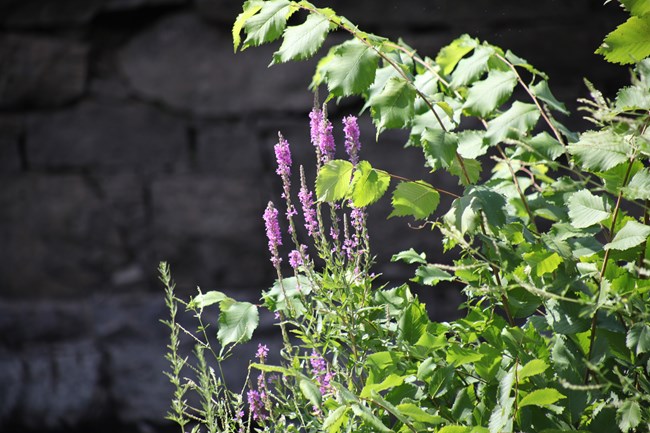
Purple loosestrife spreads quickly along highways and in urban areas because it can tolerate higher pH levels in the soil (the level of acidity or basicity, usually caused by road salt and other chemicals). It also grows rapidly in brackish wetlands and along bodies of fresh water. Purple loosestrife brings with it some benefits to the ecosystem. It helps prevent riverbank erosion, and grows where few other plants are able along salted roadways. Even so, most conservationists consider this plant detrimental to local ecosystems because it crowds out many native species whose growth they want to encourage. In 2009, Massachusetts included purple loosestrife on the "prohibited plant list." It cannot be sold, distributed, imported or spread willfully in the state. For the past 20-25 years, scientists have released purple-loosestrife-eating galerucella beetles into the wild to control the population. There are two schools of thought about invasive species like purple loosestrife. Some argue that in urban areas species like purple loosestrife should not just be tolerated but encouraged - after all, not many other plants can tolerate those conditions! Conservationists generally believe that even if there are benefits to having these species in cities, the spread of these plants outside the city is inevitable and should be prevented. |
Last updated: September 26, 2020
